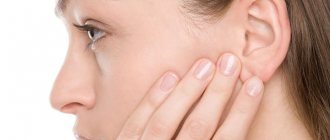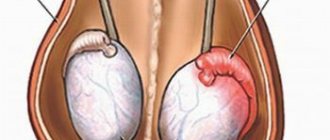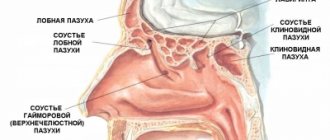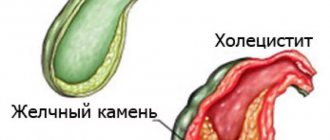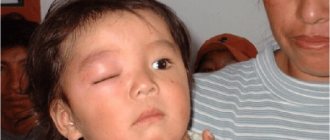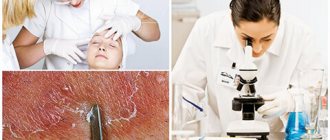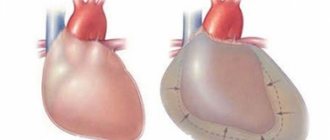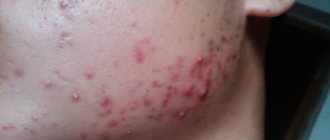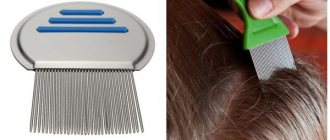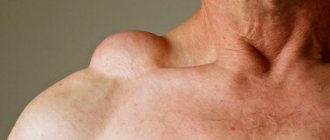Why does the disease occur?
The pathology is based on the premature production of enzymes by the pancreas, which are normally in an inactive state. These are trypsin, phospholipase and lipase. They negatively affect the condition of blood vessels, lead to cell damage and the oxidative process in the body. Iron, under the influence of these enzymes, begins to recycle itself. An internal inflammatory focus appears, which grows and leads to general intoxication of the body.
What is the triggering moment? Why do “dormant” substances suddenly begin to be produced and destroy the pancreas? The main reason is the negative impact of toxic substances, such as alcohol.
Other reasons include:
- Functional and inflammatory diseases of the gallbladder and bile ducts.
- Injuries to the gland, as well as its damage during operations.
- Vascular pathologies.
- Pathologies of the endocrine system.
- Infectious diseases that affect the pancreas and its activity.
Systematic overeating and frequent consumption of fatty foods also lead to disturbances in the production of enzymes. Obesity and alcohol hold the palm among all possible causes of the disease.
What can cause the disease
Among the provoking factors, the following should be noted: excessive alcohol consumption, inflammatory diseases of the duodenum, hormonal disorders, trauma (wounds) of the abdomen, side effects of certain medications (antibiotics, estrogens, antitumor drugs) and pathologies of the pancreatic duct. Vascular diseases, helminthic infestations, metabolic disorders and surgery on the biliary tract can also become a “trigger” for the development of the disease. Read on to learn more about the symptoms of pancreatitis in adults.
Signs of acute pancreatitis
The main symptom that is always present with this diagnosis is severe and persistent pain, which is very difficult to relieve with analgesics. Often a painful attack is preceded by eating a large meal or drinking a lot of alcohol.
The following manifestations are also observed:
- severe nausea and vomiting that does not bring relief;
- bloating;
- dehydration;
- skin spots around the navel, which may have a bluish or yellowish tint.
- increased body temperature;
- chills.
People during an attack are restless, have rapid breathing and a rapid pulse. A decrease in blood pressure may occur. In purulent forms of the disease, severe intoxication occurs, which is accompanied by high fever, chills, and perspiration.
Such symptoms require immediate hospitalization and medical attention. The patient will not be able to make the patient feel better on his own. If you miss time, death is possible.
Clinical manifestations
Symptoms of acute pancreatitis are severe pain in the epigastrium. The vomiting does not stop and a mass of bile comes out of the body. You may also experience bloating. As a result of vomiting, dehydration occurs, and hemorrhagic bluish spots appear on the left side of the abdominal wall, sometimes with a yellowish tint.
Urine may be dark in color, while feces, on the contrary, may be lightened.
symptoms of acute pancreatitis
Severity and form of acute pancreatitis
Depending on the severity of the pathology, 3 degrees are distinguished:
- Mild - organ failure is minimal. There may be slight swelling. Medication therapy and diet are sufficient.
- Moderate - local complications of a necrotic nature occur. Functional insufficiency of the pancreas occurs, which leads to disruption of the functioning of other organs and systems.
- Severe - the inflammatory process affects neighboring tissues and organs. Possible infection and development of purulent infected necrosis. Urgent surgery is required.
There are also 3 main forms of pathology. This is edematous, sterile and infected pancreatic necrosis. The edematous form is the most common and corresponds to a mild degree of the disease. Rarely leads to serious consequences.
Sterile and infected species are characterized by a very severe course. They are accompanied by the death of organ tissue, which is an irreversible change. Toxins penetrate into the blood, although bacteria and viruses are absent. Without urgent medical care, a person with this form dies quite quickly.
Diagnostic methods
Successful treatment of pancreatitis often depends on accurate and early diagnosis. Primary diagnosis must be carried out within the first 2 days from the moment a person is admitted to the surgical department with suspected pancreatitis.
The “gold” standard for identifying a disease is the presence of a triad of symptoms in the patient:
- Severe pain in the gastrointestinal tract that radiates to the back.
- Frequent vomiting.
- Bloating or muscle tension in the area.
Collecting complaints and palpation helps the specialist make a preliminary diagnosis. By collecting anamnesis and palpation, the doctor makes a preliminary diagnosis. To complete the diagnostic picture, the following research methods are prescribed:
- laboratory tests (blood, urine, hemostasiogram);
- Ultrasound of the pancreas;
- X-ray of the peritoneum and chest;
- FGDS.
Sometimes it is necessary to take a tissue sample from the pathological area for histological examination. In this case, the doctor may recommend diagnostic laparoscopy.
How is pancreatitis examined?
Diagnosis and treatment of pancreatitis are the responsibility of a gastroenterologist. To make a diagnosis, the doctor collects anamnesis, conducts an examination and prescribes diagnostic procedures.
Medical examination
The procedure includes assessing the condition of the skin, eye sclera, tongue, and the functioning of the salivary glands. The patient is then placed on the couch and palpated and tapped to identify objective symptoms of pancreatitis:
- Mussi-Georgievsky's symptom, or phrenicus symptom - painful sensations when pressing with your fingertips in the area above the left collarbone - where the phrenic nerve passes between the legs of the sternocleidomastoid muscles;
- sensitivity in the Shoffar area - in the area of the projection of the head of the pancreas, 5-6 cm above and to the right of the navel;
- Gubergrits-Skulsky symptom - pain manifests itself in the area of the projection of the body of the pancreas, slightly to the left of the Shoffard zone;
- pain in the Mayo-Robson area – left costovertebral angle – area of the tail of the pancreas;
- Desjardins' symptom - sensitivity at a point located 5-6 cm above the navel along the line connecting the navel and the armpit; like the Choffard area, the point is a projection of the head of the pancreas;
- hypotrophic Grotta sign - lack of subcutaneous fat in the area of gland projection;
- Tuzhilin’s hemorrhagic symptom, or the “red droplets” symptom, manifests itself in the form of small burgundy rashes or brown pigmentation over the gland area;
- Kach's symptom - pain on palpation at the exit of the nerve processes at the level of the thoracic vertebrae: 8-9th - on the left, 9-11 - on the right.
- Voskresensky's symptom - with an enlarged pancreas with swelling of the tissue, the pulse of the abdominal aorta cannot be palpated.
Together with the survey, palpation allows you to determine the presence of dyspeptic phenomena from the digestive tract: flatulence, belching, nausea, diarrhea, constipation.
Attention! A sign of chronic pancreatitis may be severe weight loss. It develops as a result of disruption of the process of food digestion against the background of a decrease in the secretory function of the gland and enzyme deficiency. Accompanied by increased dry skin, anemia, dizziness.
Diagnostic procedures
Laboratory diagnostic methods:
- a general blood test reveals signs of inflammation - high levels of leukocytes, low ESR;
- a biochemical blood test determines the level of pancreatic enzymes - amylase, alkaline phosphatase, as well as the pigment bilirubin;
- urine analysis shows the residual content of the enzymes amylase and diastase;
- tubeless diagnostic methods assess the activity of the digestive process by introducing substrates for pancreatic enzymes and then monitoring their absorption;
- Stool analysis for parasites is carried out as necessary.
Toolkit of techniques:
- Ultrasound – determines the shape and size of the organ, the presence of compactions and fibrous areas;
- gastroscopy - assesses the degree of inflammation of the walls of the stomach and duodenum;
- radiography and its variant - endoscopic retrograde cholangiopancreatography - help to detect accumulations of clots or stones in the ducts that cause blockage;
- probe methods for determining the exocrine function of the gland - secretin-pancreozymin test, Lund test;
- CT or MRI allows you to assess the degree of tissue necrosis in severe patients;
- Laparoscopy is used in difficult cases for visual assessment and tissue biopsy.
Acute pancreatitis of the pancreas: treatment methods
The treatment method is selected only by the attending physician after all diagnostic measures. It is important to establish the exact form and degree of development of the disease. The choice of therapy is also influenced by the presence or absence of complications.
Therapeutic measures
For mild pathology, when the gland is able to function normally and there are no necrotic phenomena, the following treatment methods are used:
- Fasting - therapeutic fasting is usually recommended for 2-3 days. Sometimes the necessary nutrients are administered intravenously.
- Applying cold to the abdomen to reduce pain.
- Taking analgesics and antispasmodics.
- Fluid therapy is given to prevent dehydration. This will help restore water and electrolyte balance and stimulate urination.
In rare cases, antibiotic therapy is prescribed. Antibiotics are used if there is a risk of developing a purulent process or infection.
A mild form of the disease can be stopped in 2-3 days, after which the person is discharged from the hospital. However, to prevent relapse, you must follow the doctor's nutritional requirements.
Surgical methods
Moderate and severe pancreatitis leads to pathological changes in the gland itself, so only surgery will be effective.
Nowadays, laparoscopic intervention is increasingly used, which is characterized by low trauma to the skin and abdominal wall, rapid recovery and minimal likelihood of complications. It is performed under general anesthesia. The purpose of surgery is to clean out purulent areas and remove “dead” gland tissue.
In severe, advanced cases, there is a need for repeated operations.
Nutritional treatment of chronic pancreatitis is as follows:
In the first days of exacerbation of chronic pancreatitis, it is recommended to completely abstain from food and drink only alkaline mineral waters (Borjomi, etc.) - this will help neutralize the acidity of the stomach and reduce the production of digestive juice in the pancreas.
After 2–3 days, boiled dishes, porridges, small amounts of lean meat, and boiled fish are introduced into the patients’ diet. Throughout the entire period of exacerbation of the disease, it is recommended to reduce the consumption of raw vegetables, fruits, whole milk and other foods that cause bloating. During periods of remission of chronic pancreatitis, in order to prevent new exacerbations, patients are advised to avoid drinking alcohol, fatty, spicy, sour or highly salty foods.
Elimination of pain in chronic pancreatitis is achieved by prescribing painkillers and antispasmodics (no-spa, papaverine, baralgin, analgin, diclofenac, etc.).
Establishing digestion and compensating for pancreatic enzyme insufficiency is one of the most important stages in the treatment of chronic pancreatitis. For this purpose, patients are prescribed enzyme preparations (Mezim, Creon, Pancreatin). To increase the effectiveness of enzyme preparations, it is important to follow several rules for their use:
- correctly determine the dose of enzymes; for most patients, an adequate dose (in lipase equivalent) is 20,000 - 25,000; Usually, this dose of enzymes is contained in 1-2 tablets (medicine capsules);
- You need to take the medicine with every meal;
- take the medicine with the last portion of food, drinking a glass of alkaline mineral water; alkaline environment will protect enzymes from stomach acidity and maintain their activity;
- a course of treatment with enzyme preparations usually lasts 2–3 months, after which you need to reduce the dose of the medicine (to half) and continue treatment for another 1–2 months.
Currently, antacids (medicines that reduce stomach acidity) are used to increase the effectiveness of enzyme therapy and reduce the inflammatory process in the pancreas. Among them, the greatest preference is given to H2 receptor blockers (Ranitidine) and proton pump blockers (Omeprazole, Lanzoprazole). The dose of these drugs and the duration of treatment are determined by the attending physician.
Prognosis and possible complications of the disease
The prognosis often depends on how advanced the disease is and in what form it occurs. The most favorable option is the edematous form or mild degree of acute pancreatitis. At this stage, the use of conservative treatment methods gives good results.
If pancreatic necrosis develops, the probability of death is more than 20%. When infection occurs and purulent complications occur, this percentage doubles.
Let's consider what serious complications the disease can lead to:
- sepsis;
- formation of abscesses or fistulas in the peritoneum;
- internal bleeding;
- necrosis of the gland (death of its cells and tissues);
- tumors;
- renal failure;
- cholelithiasis;
- severe intoxication, which leads to hypovolemic shock and cerebral edema.
Given the achievements of modern medicine and advanced equipment, mortality from pancreatitis is becoming less and less. However, acute pancreatitis is a dangerous and serious disease that should not be taken lightly.
Preventive actions
In order to maintain the health of the pancreas, you need to maintain moderation in food and not drink low-quality alcoholic beverages.
If the disease has already been diagnosed, then you should complete the course of treatment to the end, following all medical recommendations. The following tips will help prevent relapse:
- Reduce the amount of fatty foods in your diet. It's better to exclude it altogether. Cook food by steaming, boiling or in the oven with a minimum of oil.
- Increase immunity.
- Do not cause diseases of the internal organs that are located next to the pancreas.
- Avoid alcohol completely. Even a small amount can lead to hospitalization again with an attack of illness. Ethanol forces the gland to work harder, and given its painful condition, this can lead to an unfavorable outcome.
A good result during the rehabilitation period is achieved by sanatorium-resort treatment, which includes drinking mineral waters. Naturally, only a doctor can prescribe it. You should also not prescribe or take enzyme preparations or dietary supplements on your own.
Risk group
At risk, as Dmitry Chudayev says, are people with diseases of the biliary tract, cholelithiasis, and patients with acute surgical diseases of the abdominal organs. In addition, among the reasons for the development of pancreatitis, factors such as:
- poisoning;
- injuries;
- viral diseases;
- operations and endoscopic manipulations.
So in these cases, you should listen carefully to yourself and undergo timely examinations with a doctor to eliminate the risk of developing pathology.
“For prevention purposes, it is recommended to avoid alcohol, fatty, spicy and fried foods, especially in large quantities,” advises surgeon Chudayev.
Article on the topic
Spare the pancreas! How to protect yourself from pancreatitis
